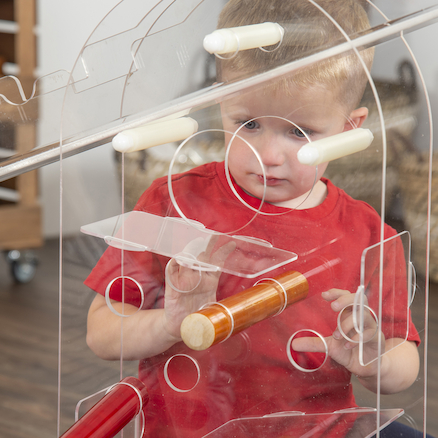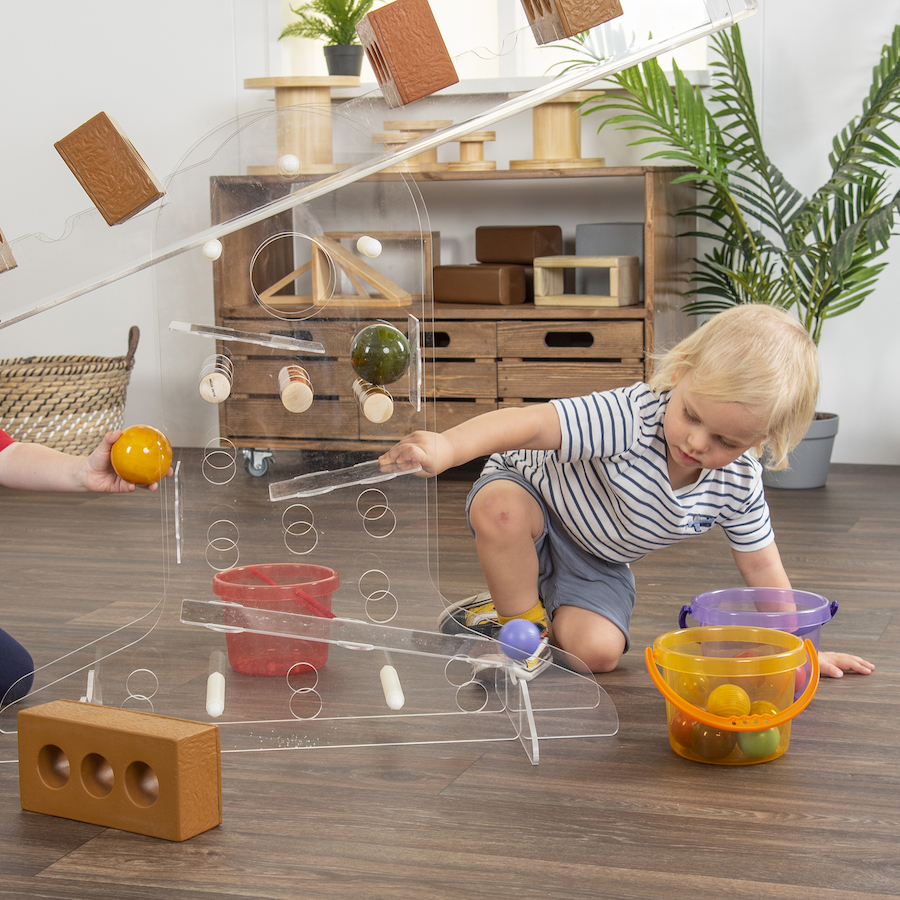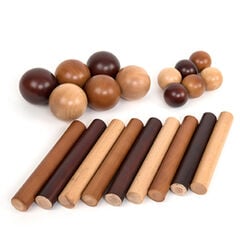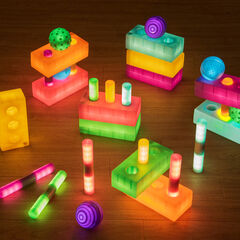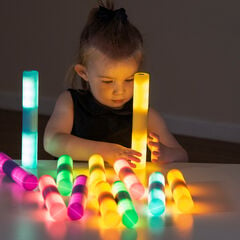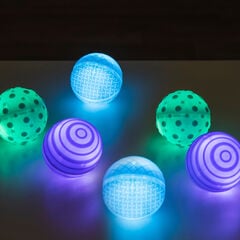Exploring STEAM in the Early Years with the STEAM Discovery Centre
STEAM stands for Science, Technology, Engineering, Arts, and Maths. You might be more used to the term STEM, but Arts is often added to recognise the role of creativity and design in STEM fields. Including Arts makes these subjects more early years friendly too.
STEAM learning is becoming increasingly common in the years before formal school education begins. In fact children that experience this type of learning early on have been shown to transition more easily and confidently into school life, with better results there too.
In the early years, STEAM focuses on self-directed play and exploration rather than direct teaching of concepts. Think of your children as little scientists conducting experiments and encourage them to develop curious and inquisitive minds.
TTS’s STEAM Discovery Centre is a perfect resource for this child-led explorative play. Not only is it big enough to be incredibly appealing to young children and to encourage collaborative or parallel play, but there are so many different STEAM concepts children can explore and learn just by adding in simple resources you’ll already have in your setting.
Where to start with the STEAM Discovery Centre
While you’ll want to give your children the chance to explore the STEAM Discovery Centre in their own way, it might be hard to know where to start with something so versatile. Below I’ve outlined some open-ended ideas that use simple resources you’ll already have to give rich STEAM learning experiences.
STEAM Exploration with the Ramp Track
The central column of the STEAM Discovery Centre features a downwards track where children can explore different concepts, even at the same time as others play with the balance above. The whole Centre is made of acrylic making it great for children to actually see what’s happening too.
Getting Started
Leave out some different objects for the children to investigate how the different shapes move down the track – do they roll or slide? Have at least a few different balls for the children to explore how the different sizes, weights and materials compare when they roll down the track from different starting points.
They could even roll down two smaller balls side by side and use comparative language around speed to describe the balls as well as comparing order (first, last).
Further Exploration
Children could also explore the path of the rolling objects by inserting cylinders across the track to stop the ball in different places. They can refine their fine motor skills by removing and reinserting the cylinders as the ball moves down the track, perhaps even trying to do it quickly as the ball rolls down.
Extended Exploration
Working with a small group, an adult could help the children devise a scientific test to compare the balls’ relative speeds down the track. Let each ball roll off the end of the track until it comes to a stop. Compare where each ball stops by leaving the balls in place or making a mark on the floor. Children will then start to think about the fastest speed generating the most momentum and making the ball roll the furthest – physics for the early years! Another similar test could be to start the same ball at different heights on the track and compare the distance rolled.
STEAM learning:
- 3D shapes (names and properties. Will they roll or slide?)
- Materials (what the balls are made out of and relative weight)
- Position (higher/lower, above/below)
- Size vocabulary (smaller/bigger)
- Path of a rolling object
- Predicting, testing and making observations
- Measuring and comparing (further/less far/furthest)
- Gravity
- Relative speed and momentum
Key questions to draw learning:
To facilitate this kind of exploration as well as encouraging predictions, adults might ask questions such as:
- Does that shape roll or slide? Do you think this object will roll or slide? Why do you think that?
- Can you put this cylinder in to stop the ball before it reaches the bottom?
- Which ball looks like it rolls fastest down the track? Can we think of a way to test that? Do you think a fast ball will roll a long way or a short way across the floor at the bottom?
- Which ball travelled the furthest? Which ball rolled down the track the quickest?
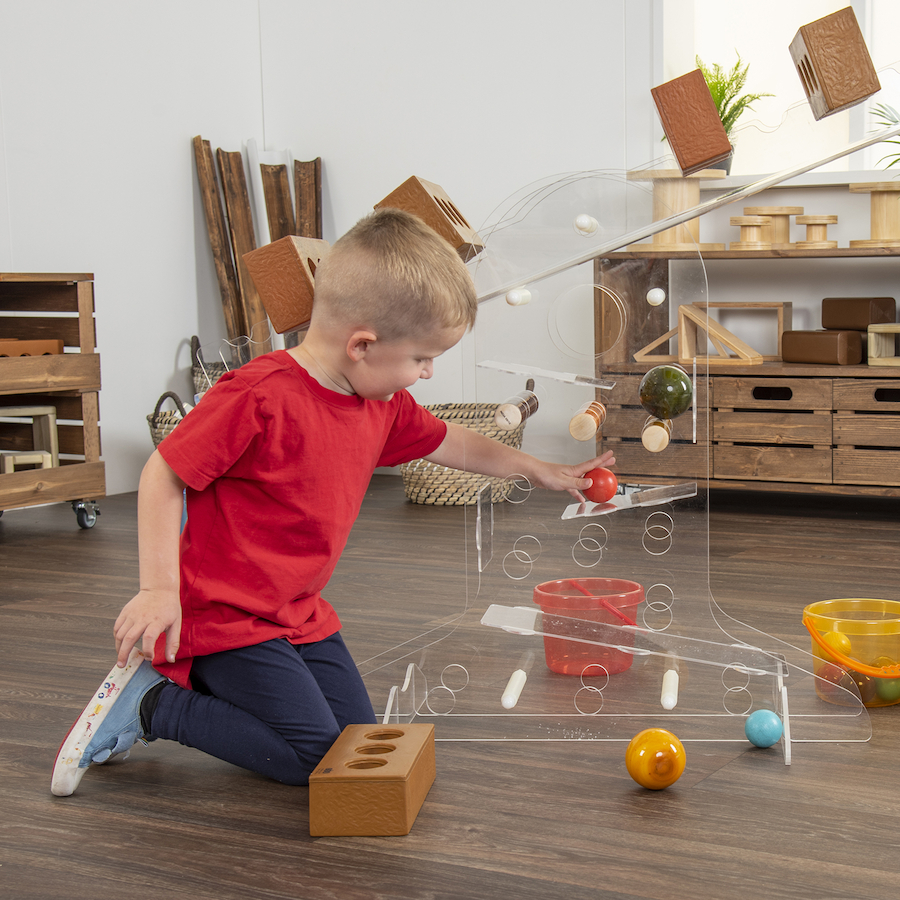
Resources to use with the Ramp Track:
- Balls
- Wooden balls and cylinders
- Other spherical objects
- Different shaped blocks
- Chalk pens to draw or white key words on the side of the track
- Water when used outdoors
The best thing about the STEAM Discovery Centre, like STEAM learning in general, is that you don’t need to actively teach anything. Instead you’ll simply facilitate children to explore concepts in the world around them using carefully chosen resources, encouragement and probing questions.
Its versatility also means it won’t stand unused in the corner of your room after the first week. Children can enjoy returning to it on different occasions to reinforce what they’ve previously learnt, to take their investigations further, or to explore with new resources.
Take a look at my videos for demonstrations of some of these ideas using the STEAM Discovery Centre.
To read another blog or watch another video with more activity ideas for the STEAM Discovery Centre, click here.
About the Author:
Laura is a qualified and experienced primary teacher and STEM specialist who runs Inventors & Makers workshops, after-school clubs and CPD both virtually and in-person for nurseries and primary schools all over the world. She wants to help teachers feel confident to teach engineering themselves and so allow pupils everywhere to experience the hands-on educational fun of STEM.
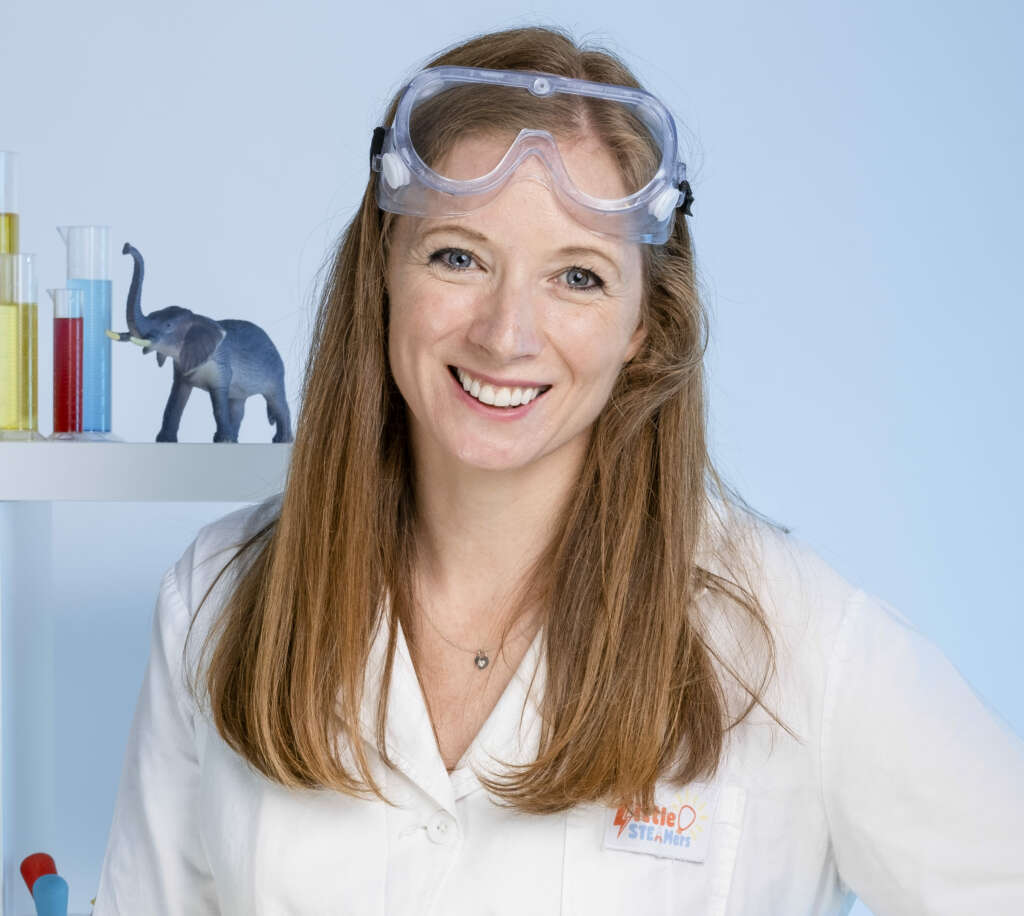
Website: //www.inventorsandmakers.com/eyfs or write inventorsandmakers.com
Facebook: //www.facebook.com/inventorsandmakers
Instagram: //www.instagram.com/inventorsandmakers/
Twitter: //twitter.com/inventorsm


